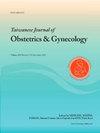PHLDA2 expression and promoter methylation in placental trophoblasts: Associations with preeclampsia development
IF 2.2
4区 医学
Q2 OBSTETRICS & GYNECOLOGY
引用次数: 0
Abstract
Objective
Preeclampsia (PE) is an idiopathic and life-threatening pregnancy-related disease. Alterations to DNA methylation in imprinted genes may play a crucial role in the dysfunction of trophoblast cells and PE.
Materials and methods
Herein, we sought to elucidate the characteristics of PHLDA2 in placental trophoblasts and its underlying mechanisms in pregnant women with PE. Between January 2019 and December 2021, the clinical data and placental tissue samples from 15 PE cases and 15 control women who underwent obstetric examination were collected. Immunohistochemistry, qRT-PCR, WB and pyrosequencing were used to detect and compare the expression and methylation status of imprinted gene PHLDA2 in placental tissues of the two groups.
Results
The expression levels of PHLDA2 mRNA and protein were significantly higher in the placental tissue of PE patients than those of healthy controls during the third trimester (P = 0.001). Additionally, PHLDA2 expression levels were evaluated in four trophoblast cell lines, with the JEG-3 line showing the lowest expression of PHLDA2. Notably, the JEG-3 line demonstrated a significantly faster rate of proliferation compared to the other three cell lines. When the PHLDA2 was overexpressed in JEG-3 cells, the proliferative proteins were significantly reduced, while the expression levels of apoptosis-related proteins p27 and cleaved-caspase3 were significantly increased. In addition, pyrosequencing showed that the methylation levels of the PHLDA2 promoter region were significantly lower in PE placentas than in controls.
Conclusion
The hypomethylation status of the PHLDA2 promoter is associated with its altered expression in PE placentas, suggesting a potential role in the condition's pathogenesis.
胎盘滋养细胞PHLDA2表达和启动子甲基化:与子痫前期发展的关系
目的子痫前期(PE)是一种特发性、危及生命的妊娠相关疾病。印迹基因中DNA甲基化的改变可能在滋养层细胞和PE功能障碍中起关键作用。材料和方法在本文中,我们试图阐明胎盘滋养细胞中PHLDA2的特征及其在PE孕妇中的潜在机制。在2019年1月至2021年12月期间,收集了15例PE病例和15例接受产科检查的对照妇女的临床数据和胎盘组织样本。采用免疫组织化学、qRT-PCR、WB和焦磷酸测序检测并比较两组胎盘组织中印迹基因PHLDA2的表达和甲基化状态。结果妊娠晚期PE患者胎盘组织中PHLDA2 mRNA和蛋白的表达水平显著高于正常对照组(P = 0.001)。此外,我们还检测了4种滋养细胞系中PHLDA2的表达水平,其中JEG-3细胞系PHLDA2的表达最低。值得注意的是,与其他三种细胞系相比,JEG-3细胞系的增殖速度明显更快。当PHLDA2在JEG-3细胞中过表达时,增殖蛋白显著降低,而凋亡相关蛋白p27和cleaved-caspase3的表达水平显著升高。此外,焦磷酸测序显示,PE胎盘中PHLDA2启动子区域的甲基化水平显著低于对照组。结论PHLDA2启动子的低甲基化状态与其在胎盘PE中的表达改变有关,提示其可能在PE的发病机制中发挥作用。
本文章由计算机程序翻译,如有差异,请以英文原文为准。
求助全文
约1分钟内获得全文
求助全文
来源期刊

Taiwanese Journal of Obstetrics & Gynecology
OBSTETRICS & GYNECOLOGY-
CiteScore
3.60
自引率
23.80%
发文量
207
审稿时长
4-8 weeks
期刊介绍:
Taiwanese Journal of Obstetrics and Gynecology is a peer-reviewed journal and open access publishing editorials, reviews, original articles, short communications, case reports, research letters, correspondence and letters to the editor in the field of obstetrics and gynecology.
The aims of the journal are to:
1.Publish cutting-edge, innovative and topical research that addresses screening, diagnosis, management and care in women''s health
2.Deliver evidence-based information
3.Promote the sharing of clinical experience
4.Address women-related health promotion
The journal provides comprehensive coverage of topics in obstetrics & gynecology and women''s health including maternal-fetal medicine, reproductive endocrinology/infertility, and gynecologic oncology. Taiwan Association of Obstetrics and Gynecology.
 求助内容:
求助内容: 应助结果提醒方式:
应助结果提醒方式:


